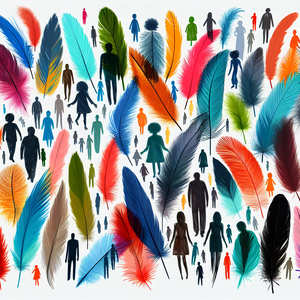The Journey from Gamer to Game Designer

The journey often begins with a simple love for gaming. Many future designers start as players who are captivated by the artistry and storytelling in their favorite games. For instance, Jane Doe, a former avid player of role-playing games, describes her initial inspiration: "I was fascinated by the worlds that game designers created and wanted to be the one crafting those experiences." This spark of curiosity often leads to a deeper exploration of game mechanics, storytelling, and design principles.
Learning the Craft: Developing Skills and Knowledge
Transitioning from a gamer to a game designer requires a significant investment in learning and skill development. Many aspiring designers pursue formal education in game design or related fields, while others may choose self-directed learning through online courses and tutorials. Skills such as coding, graphic design, and narrative development become essential. For example, John Smith, who transitioned into game design after years of playing competitive multiplayer games, emphasized the importance of understanding programming languages: "I started with Java and C# to better comprehend how games function. This knowledge is crucial for communicating ideas effectively with developers." Additionally, tools like Unity and Unreal Engine have democratized game development, allowing aspiring designers to experiment with game creation even without a formal education.
Facing Challenges: Overcoming Hurdles Along the Way
The path to becoming a game designer is not without its challenges. Many aspiring designers face obstacles such as self-doubt, the competitive nature of the industry, and the need for a robust portfolio. Jessica Lee, who transitioned from a marketing career to game design, acknowledges this struggle: "It was daunting to put my work out there. I had to learn to embrace feedback and use it to improve my designs." The gaming industry is highly competitive, with many talented individuals vying for limited positions. To stand out, aspiring designers must build a strong portfolio that showcases their creativity and technical skills.
Building a Portfolio: Showcasing Creativity and Vision
A strong portfolio is essential for aspiring game designers to demonstrate their skills and creativity. This collection of work often includes game prototypes, design documents, and artwork. Many designers start by creating small projects or participating in game jams, where they can experiment and showcase their abilities. For instance, during a recent game jam, aspiring designer Mark Thompson developed a unique puzzle game that caught the attention of industry professionals. "The exposure I gained from that single project opened doors I never thought possible," he reflects.
The Payoff: A Rewarding Career in Game Design
The culmination of this journey often leads to fulfilling careers in game design. Once they break into the industry, many find themselves working in diverse roles, from level design to narrative development. The satisfaction of seeing their ideas come to life in a published game is a rewarding aspect of the profession. Moreover, the sense of community within the gaming industry fosters collaboration and support among designers.
The journey from gamer to game designer is a testament to the transformative power of passion and creativity. While the path may be fraught with challenges, the rewards of crafting immersive experiences and engaging narratives make it worthwhile. By embracing learning opportunities, building strong portfolios, and connecting with the gaming community, aspiring designers can turn their love for gaming into a successful and fulfilling career.
Gameplay Programmer
Electronic Arts, Ubisoft, Blizzard Entertainment
Core Responsibilities
Develop and implement gameplay mechanics and features using programming languages such as C++ or C#.
Collaborate with designers to translate concepts into functional game systems.
Optimize game performance and fix bugs to ensure a smooth player experience.
Required Skills
Proficiency in game engines like Unity or Unreal Engine.
Strong understanding of physics, AI, and computer graphics.
Experience with version control systems like Git.
Level Designer
Naughty Dog, Insomniac Games, Rockstar Games
Core Responsibilities
Create engaging and visually appealing game levels that enhance player experience.
Use design tools to build environments, set challenges, and balance gameplay elements.
Playtest levels and iterate based on feedback to optimize player engagement.
Required Skills
Proficiency in level design software such as Unity, Unreal Engine, or proprietary tools.
Strong spatial awareness and understanding of pacing and flow in game design.
Ability to collaborate effectively with artists and programmers.
Narrative Designer
Telltale Games, BioWare, Bethesda Game Studios
Core Responsibilities
Develop and write compelling storylines, character arcs, and dialogue for games.
Collaborate with game designers and artists to ensure narrative elements align with gameplay.
Create documentation that outlines plot points, character interactions, and lore.
Required Skills
Excellent writing and storytelling skills, with experience in scriptwriting or creative writing.
Understanding of game mechanics and how they can enhance storytelling.
Familiarity with narrative design tools and software.
UI/UX Designer for Games
Riot Games, Epic Games, Square Enix
Core Responsibilities
Design intuitive and visually appealing user interfaces for game menus, HUDs, and in-game systems.
Conduct user research and testing to improve the overall player experience.
Work closely with gameplay programmers to ensure UI elements function seamlessly within the game.
Required Skills
Proficiency in design software such as Adobe XD, Figma, or Sketch.
Strong understanding of user-centric design principles and usability testing.
Ability to create wireframes, prototypes, and detailed design specifications.
Art Director for Video Games
Capcom, Activision, CD Projekt Red
Core Responsibilities
Oversee the visual style and artistic direction of game projects, ensuring consistency across all assets.
Lead and mentor a team of artists, providing feedback and direction on character, environment, and UI design.
Collaborate with other departments to align artistic vision with game design and narrative goals.
Required Skills
Extensive experience in game art production and proficiency in 3D modeling and texturing software like Maya or Blender.
Strong portfolio showcasing a range of artistic styles and completed projects.
Excellent leadership and communication skills to work effectively within a team.


